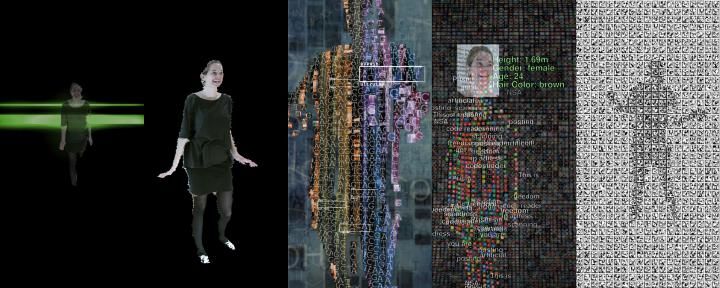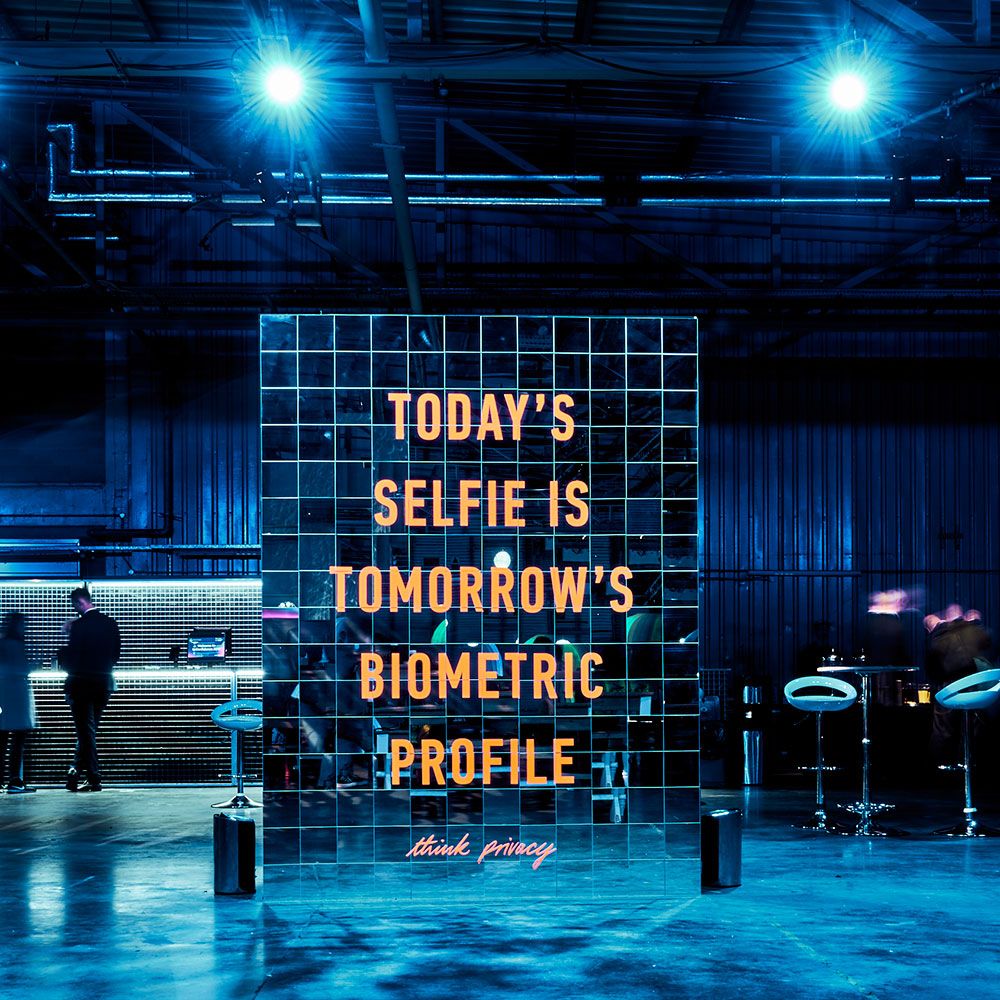Exhibition
The Kitty AI: Artificial Intelligence for Governance
Artist: Pinar Yoldas (Turkey/USA)
Medium: Video installation
Set in the year 2039, this 3D animation depicts a future where an artificial intelligence in the form of a digital kitten becomes the first non-human governor of a European city. Rising to power after a period of profound social upheaval caused by climate change, population displacement and political turmoil, Kitty AI is able to offer the people comfort, care and stability where human politicians have fallen short. With her superior networked intelligence and the enhanced affective capacities of a kitten (Kitty AI is able to love up to 3 million people), she is able to tend to her citizens on a personal as well as a bureaucratic level – she can manage the city’s budget and make sure your children get to school safely.
YOU:R:Code
Artist: Bernd Lintermann (Germany)
Medium: Interactive installation with multi-channel projection
The title of this exhibition can be read in two different ways: the interpretation “your code” indicates that visitors experience different kinds of digital transformations of themselves in the installation. While a visitor when entering sees their familiar reflection in a mirror – the most real virtual depiction that we can imagine – the mirror image gradually transforms into a digital data-body until finally viewers are reduced to an industrially readable code. In the end they break free from the virtual depiction and are materialized in a flip-dot display.
The second way of reading the piece’s title – “you are code” – emphasises that we ourselves consist of code, which is manifested in the genetic code amongst other things. The genetic code constitutes the algorithm of life and, from birth, it determines what we do. In current research projects, synthetic DNA strands can even serve as long-term storage units for digital data. For data analysts and artificial intelligences operating in cloud computing, which give us our daily instructions for acting via smartphones, we are only perceived in a mediated way in the form of sensor data and through our electronic traces and expressions – to them we are codes.
Think Privacy
Artist: Adam Harvey (USA/Germany)
Medium: Mirror installation
Part provocation, part education, Think Privacy is an ongoing campaign to raise awareness about emerging issues in an era of exuberant data collection.
The Think Privacy project officially launched at the New Museum Store in New York City in March 2016. The following year, the Victoria and Albert Museum in London commissioned a custom Think Privacy sign for their entrance during the Friday Late event. The series was recently updated for the Seoul Mediacity Biennale in 2018.
Anatomy of an AI System
Artist: Kate Crawford (Australia/USA) & Vladan Joler (Serbia)
Medium: Print
At this moment in the twenty-first century, we see a new form of extractivism that is well underway: one that reaches into the furthest corners of the biosphere and the deepest layers of human cognitive and affective being. Many of the assumptions machine learning systems make about human life are narrow, normative and laden with error. Yet they are inscribing and compiling those assumptions to build a new world and will play an increasingly important role in how opportunities, wealth and knowledge get distributed.
The stack that is required to interact with an Amazon Echo goes well beyond the multi-layered “technical stack” of data modelling, hardware, servers and networks. The full stack reaches much further into capital, labour and nature, demanding an enormous amount of each. The true costs of these systems – social, environmental, economic and political – remain hidden and may stay that way for some time.
The artists offer up a map and an essay as a way to begin seeing across a wider range of system extractions. The scale required to build artificial intelligence systems is too complex, too obscured by intellectual property law, and too mired in logistical complexity to fully comprehend in the moment. Yet you draw on it every time you issue a simple voice command to a small cylinder in your living room: “Alexa, what time is it?”



